Leaf from a Carolingian Lectionary, in Latin, decorated manuscript on parchment [Reichenau, first half of tenth century] Two cuttings from the same leaf, reused as spine guards in a later binding and reunited by a modern conservator, preserving nearly an entire leaf with single column, 26 lines in a precise and elegant Carolingian minuscule, rubrics in pale orange ornamental capitals, three large simple initials in same (one oxidised), 4 diamond shaped holes left in centre of leaf from cuts made to fit around sewing stations, some scuffs, folds and worm damage (all professionally conserved), overall fair and legible, total outer dimensions 215 by 175mm., in fitted card case This leaf contains the Bible readings for masses for the twenty-first Sunday after Pentecost and the following Wednesday and Friday, according to the Comes Murbacensis (Wilmart, ‘Le Comes de Murbach’, Revue Bénédictine 30, 1913). It has been identified by Dr. Hartmut Hoffmann as a product of the scriptorium of the important imperial abbey of Reichenau (founded 724, producing crucial Carolingian scholars such as Walafrid Strabo, and housing the tomb of Charles the Fat, d. 888, the great-grandson of Charlemagne). The tenth century is often overlooked in favour of the late eighth and first half of the ninth century, the initial periods of the construction of Carolingian power in Western Europe. However, the tenth century was the period of calm after the scramble for authority and intellectual revival, which could sit back and enjoy the fruits of its forebears’ work. As such it saw some of the finest artistic products of the Early Middle Ages, and the zenith of the renewed interest in bookarts. In Reichenau it was the period of the production of some of the grandest manuscripts of the Carolingian Age, such as the resplendent Egbert Psalter, now Cividale, Bibl. Mun. MS. 136, and the illuminated Gospel Lectionary, now Getty Museum MS. 16, the scribes and artists of which must have been shoulder-to-shoulder with those who worked on the present leaf.
Leaf from a Carolingian Lectionary, in Latin, decorated manuscript on parchment [Reichenau, first half of tenth century] Two cuttings from the same leaf, reused as spine guards in a later binding and reunited by a modern conservator, preserving nearly an entire leaf with single column, 26 lines in a precise and elegant Carolingian minuscule, rubrics in pale orange ornamental capitals, three large simple initials in same (one oxidised), 4 diamond shaped holes left in centre of leaf from cuts made to fit around sewing stations, some scuffs, folds and worm damage (all professionally conserved), overall fair and legible, total outer dimensions 215 by 175mm., in fitted card case This leaf contains the Bible readings for masses for the twenty-first Sunday after Pentecost and the following Wednesday and Friday, according to the Comes Murbacensis (Wilmart, ‘Le Comes de Murbach’, Revue Bénédictine 30, 1913). It has been identified by Dr. Hartmut Hoffmann as a product of the scriptorium of the important imperial abbey of Reichenau (founded 724, producing crucial Carolingian scholars such as Walafrid Strabo, and housing the tomb of Charles the Fat, d. 888, the great-grandson of Charlemagne). The tenth century is often overlooked in favour of the late eighth and first half of the ninth century, the initial periods of the construction of Carolingian power in Western Europe. However, the tenth century was the period of calm after the scramble for authority and intellectual revival, which could sit back and enjoy the fruits of its forebears’ work. As such it saw some of the finest artistic products of the Early Middle Ages, and the zenith of the renewed interest in bookarts. In Reichenau it was the period of the production of some of the grandest manuscripts of the Carolingian Age, such as the resplendent Egbert Psalter, now Cividale, Bibl. Mun. MS. 136, and the illuminated Gospel Lectionary, now Getty Museum MS. 16, the scribes and artists of which must have been shoulder-to-shoulder with those who worked on the present leaf.
.jpg)

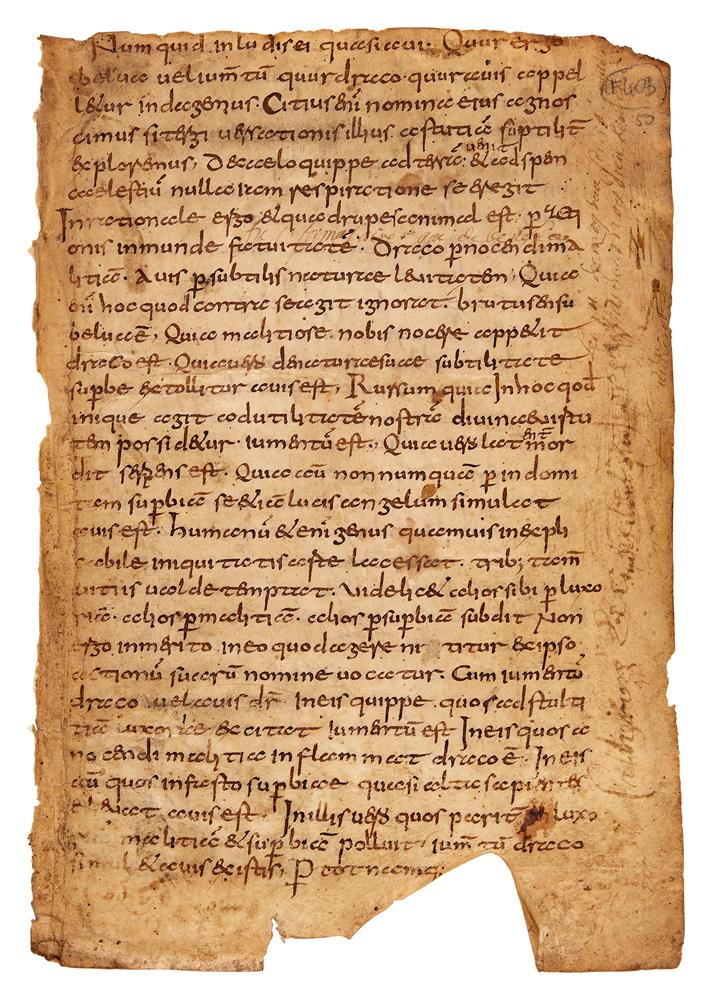



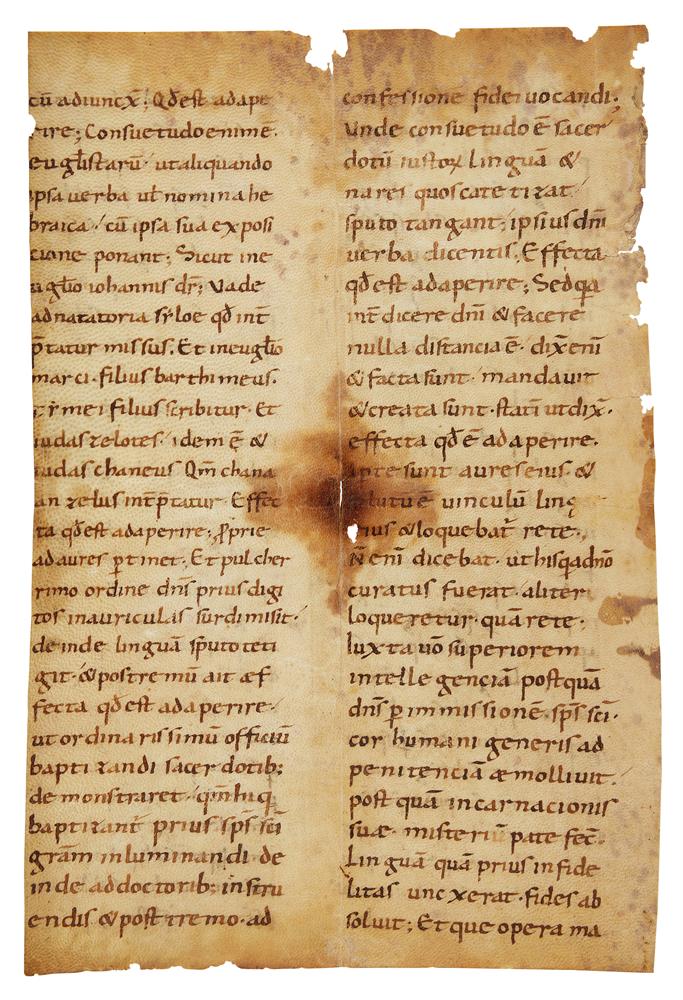
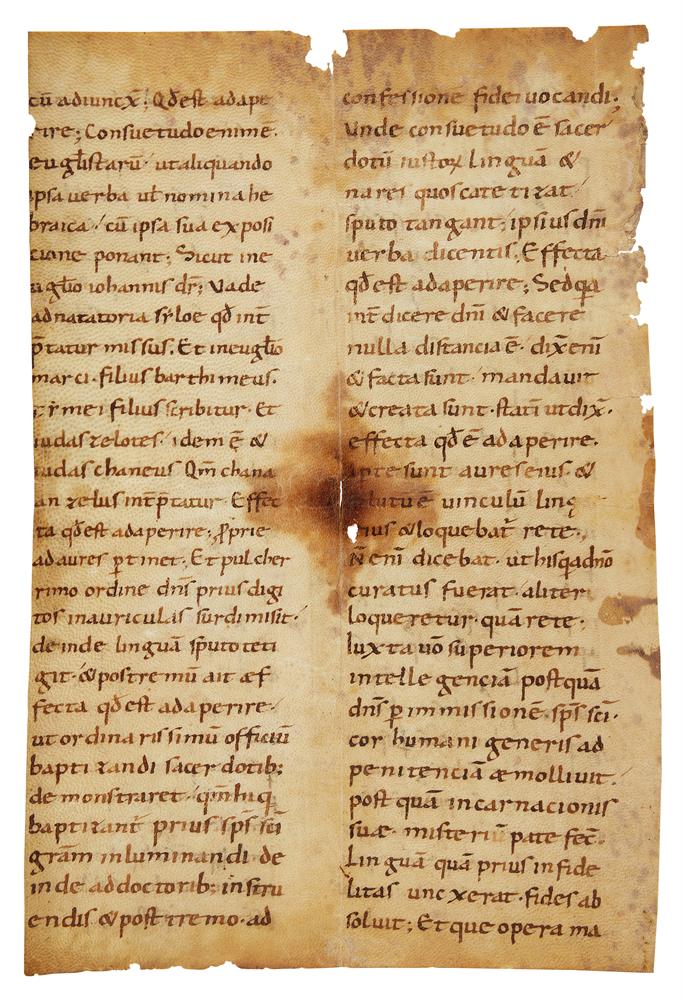
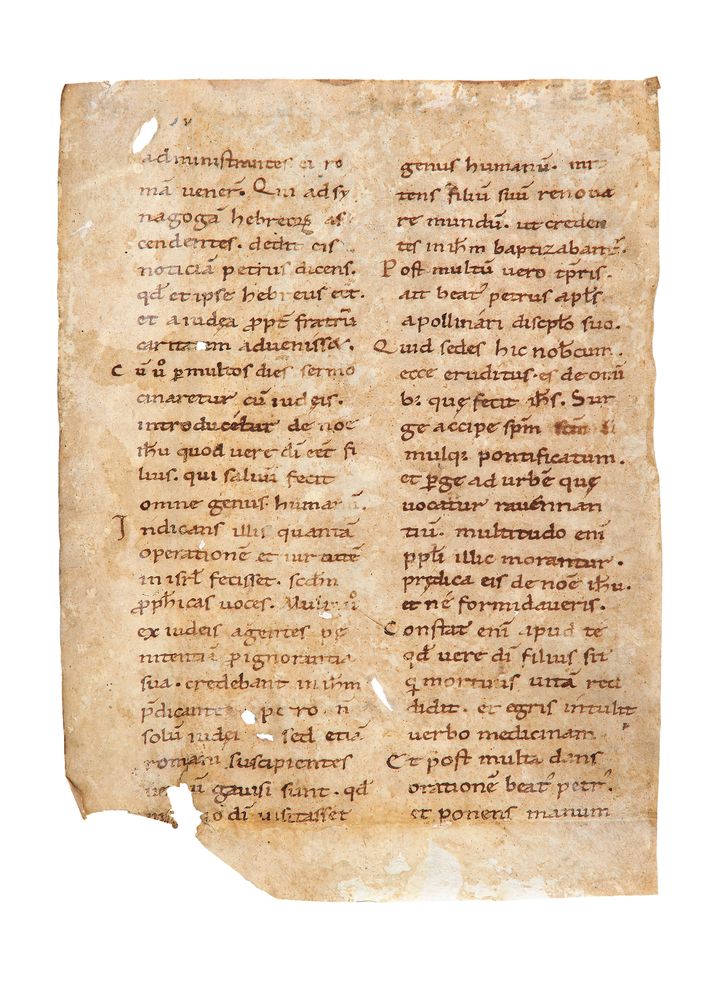
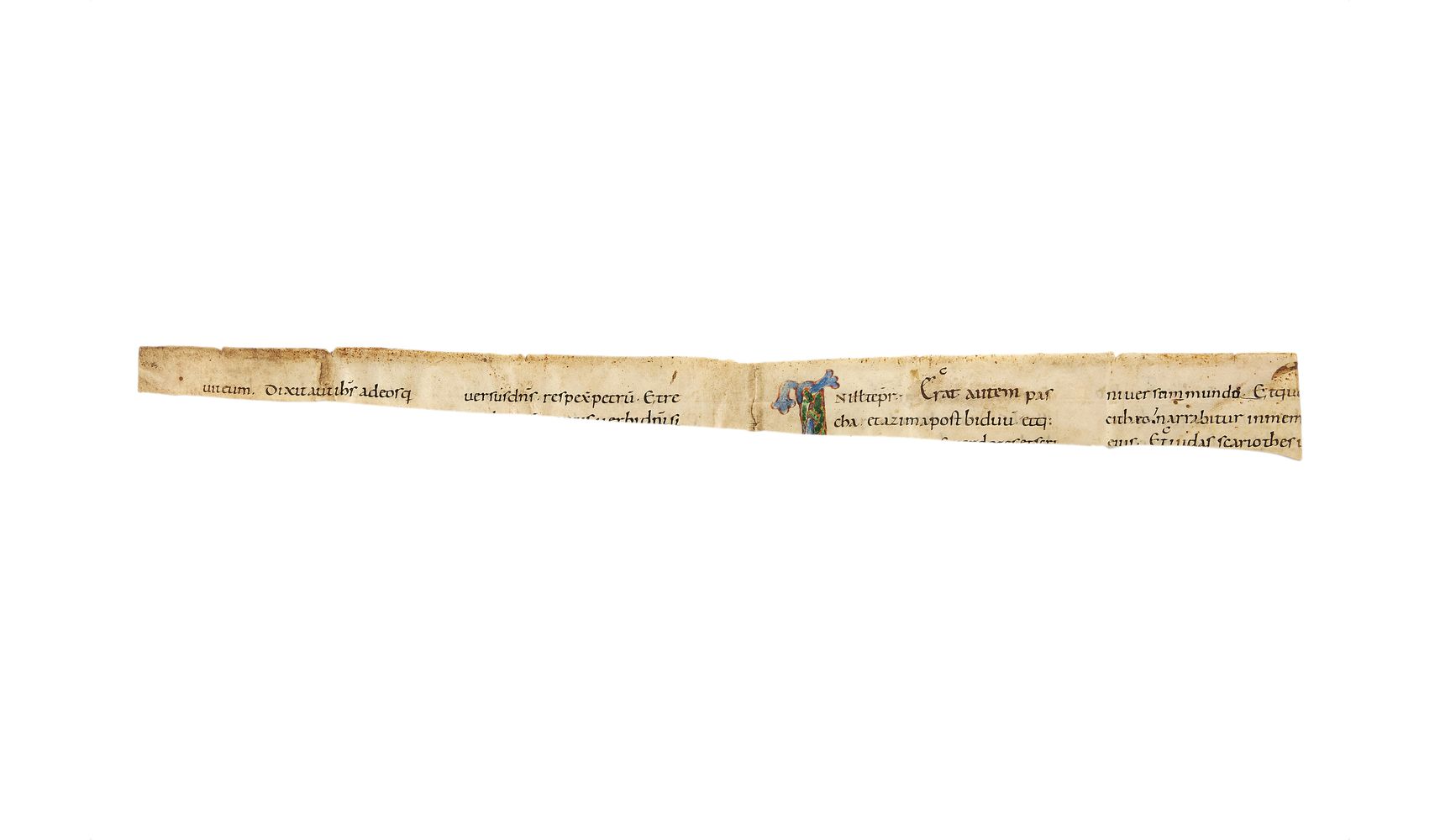
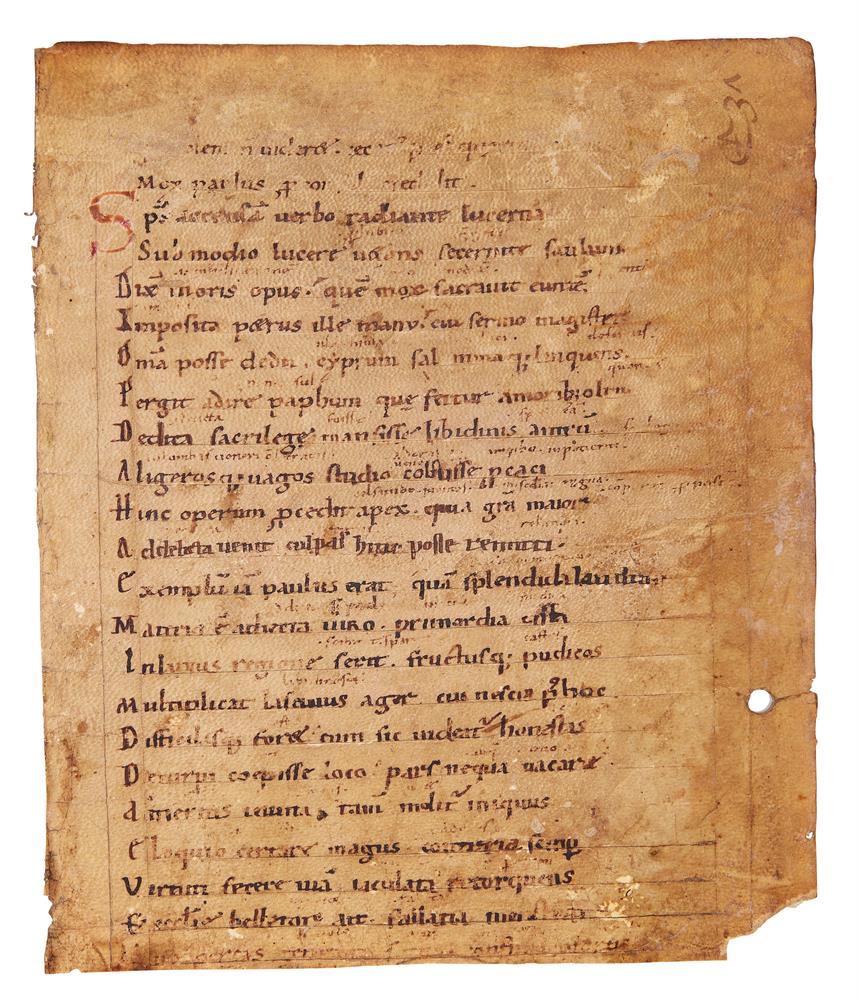

.jpg)
.jpg)
Try LotSearch and its premium features for 7 days - without any costs!
Be notified automatically about new items in upcoming auctions.
Create an alert